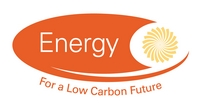Projects
Projects: Projects for Investigator |
||
| Reference Number | NIA_NGTO053 | |
| Title | Evaluation of Travelling Wave based Transmission Line Protection for Low-Fault Level Networks | |
| Status | Completed | |
| Energy Categories | Renewable Energy Sources 10%; Other Power and Storage Technologies(Electric power conversion) 90%; |
|
| Research Types | Applied Research and Development 100% | |
| Science and Technology Fields | ENGINEERING AND TECHNOLOGY (Electrical and Electronic Engineering) 100% | |
| UKERC Cross Cutting Characterisation | Not Cross-cutting 100% | |
| Principal Investigator |
Project Contact No email address given National Grid Electricity Transmission |
|
| Award Type | Network Innovation Allowance | |
| Funding Source | Ofgem | |
| Start Date | 01 July 2020 | |
| End Date | 31 July 2021 | |
| Duration | ENA months | |
| Total Grant Value | £236,270 | |
| Industrial Sectors | Power | |
| Region | London | |
| Programme | Network Innovation Allowance | |
| Investigators | Principal Investigator | Project Contact , National Grid Electricity Transmission (100.000%) |
| Industrial Collaborator | Project Contact , National Grid Electricity Transmission (0.000%) |
|
| Web Site | https://smarter.energynetworks.org/projects/NIA_NGTO053 |
|
| Objectives | Travelling Wave (TW) based protection has been identified as a promising alternative to conventional solutions (e.g. distance and overcurrent) in the literature as TW can offer significantly higher sensitivity and a faster operating response to power system faults.When a short-circuit fault occurs on a transmission line, the instantaneous voltage at the fault location suddenly collapses to a low value and travelling waves propagate in both directions away from the fault and along the line. The waves travel at almost constant velocity (v = 290m/μs), slightly less than the speed of light, and they arrive at the line ends at a time that depends on the fault location and the line length. TW relays use this principle to implement differential, distance and directional comparison protection schemes and provide an extremely accurate fault location decision.To support discrimination of travelling waves caused by switching transients or system faults, two TW devices usually would be installed for a circuit, one at each end, and communicate with TW samples. Due to a high sampling rate (over 1MHz) requirement, a direct fibre link or high-bandwidth network (e.g. Wavelength Division Multiplexing – WDM) is normally required to transfer sampling data between two ends. However, the Operational Telecommunication (Optel) network within NGET is currently based on Synchronous Digital Hierarchy (SDH) at low bandwidth, which could bring challenges to the TW application. This project will carry out Hardware-in-the-Loop testing to evaluate the feasibility of adopting TW protection with the existing Optel network and propose best practices for TW based protection deployment. The scope of this project can be divided into the following parts.Review of existing available solutions based on TW protection and practical experience in the world,Review of lab testing methodologies for TW protection,Transmission network study to identify scenarios that can cause reduced short-circuit levels,Hardware-in-the-Loop testing with commercial TW protection products under the developed low short-circuit level scenarios,Assessment of communication impacts on the protection performance and recommendations for future deployments. The project aims to evaluate the effectiveness of TW protection applied to transmission lines on low-fault level systems and understand the impacts of communication delay/asymmetry and bandwidth limitations on the operating performance, as expressed in terms of dependability, stability and speed. | |
| Abstract | The nature of power system faults is changing with the growing integration of renewable generation through power electronic converters. The fault level of transmission systems may decrease due to the replacement of conventional synchronous generators with converter fed renewable generation which delivers significantly less fault current. This project will assess the viability of applying travelling wave based protection to transmission lines operating under low-fault level conditions. The impact of communication delay/asymmetry and bandwidth limitation on protection performance will be analysed to inform utilities with best practices of using Travelling Wave protection. | |
| Data | No related datasets |
|
| Projects | No related projects |
|
| Publications | No related publications |
|
| Added to Database | 02/11/22 | |



